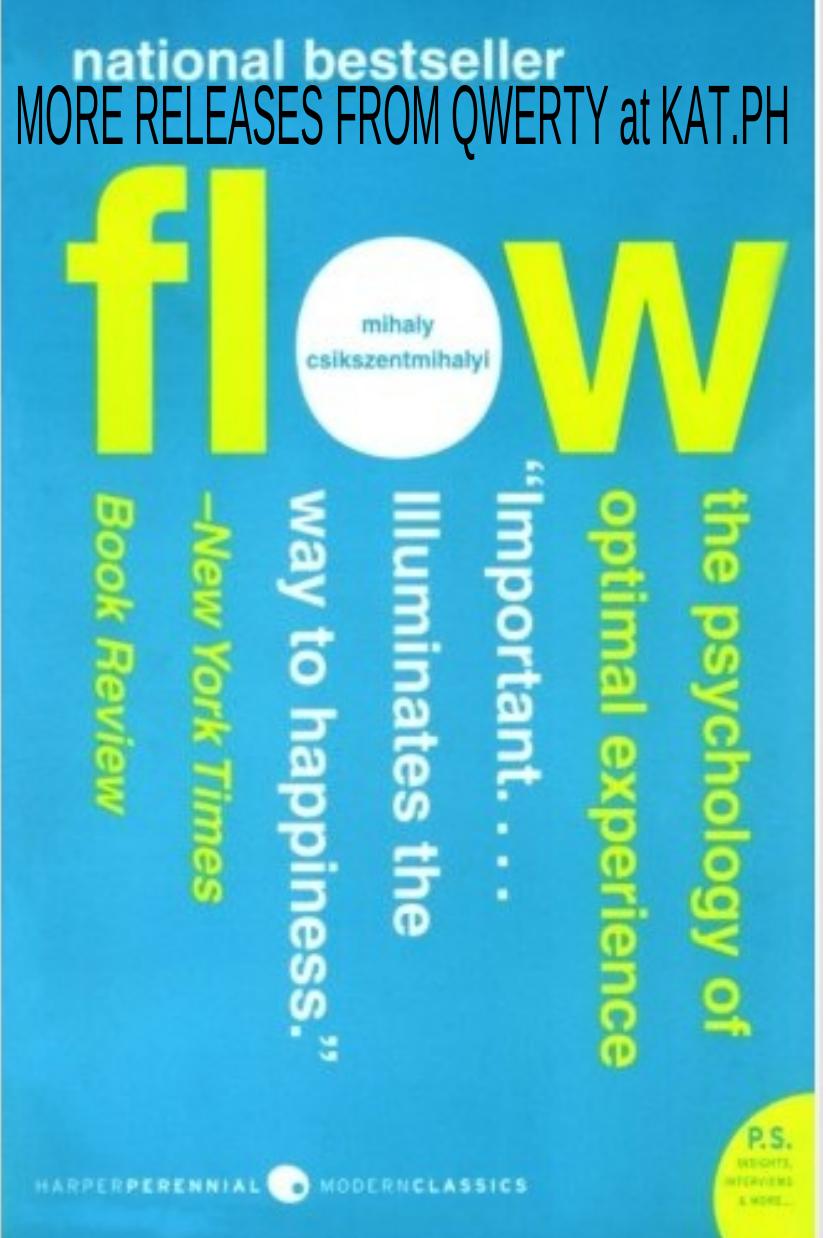Flow by Mihaly Csikszentmihalyi

Author:Mihaly Csikszentmihalyi
Language: eng
Format: epub, mobi, pdf
Publisher: HarperCollins
THE PARADOX OF WORK
It is easier to understand the way work affects the quality of life when we take the long view, and compare ourselves with people from different times and cultures. But eventually we have to look more closely at what is happening here and now. Ancient Chinese cooks, Alpine farmers, surgeons, and welders help illuminate the potential inherent in work, but they are not, after all, very typical of the kind of job most people do nowadays. What is work like for average American adults today?
In our studies we have often encountered a strange inner conflict in the way people relate to the way they make their living. On the one hand, our subjects usually report that they have had some of their most positive experiences while on the job. From this response it would follow that they would wish to be working, that their motivation on the job would be high. Instead, even when they feel good, people generally say that they would prefer not to be working, that their motivation on the job is low. The converse is also true: when supposedly enjoying their hard-earned leisure, people generally report surprisingly low moods; yet they keep on wishing for more leisure.
For example, in one study we used the Experience Sampling Method to answer the question: Do people report more instances of flow at work or in leisure? The respondents, over a hundred men and women working full-time at a variety of occupations, wore an electronic pager for one week, and whenever the pager beeped in response to signals sent at eight random times each day for a week, they filled out two pages of a booklet to record what they were doing and how they felt at the moment they were signaled. Among other things, they were asked to indicate, on ten-point scales, how many challenges they saw at the moment, and how many skills they felt they were using.
A person was counted as being in flow every time he or she marked both the level of challenges and the level of skills to be above the mean level for the week. In this particular study over 4,800 responses were collected—an average of about 44 per person per week. In terms of the criterion we had adopted, 33 percent of these responses were “in flow”—that is, above the mean personal weekly level of challenges and skills. Of course, this method of defining flow is rather liberal. If one only wished to include extremely complex flow experiences—say, those with the highest levels of challenges and skills—perhaps fewer than 1 percent of the responses would qualify as flow. The methodological convention adopted here to define flow functions somewhat like a microscope: depending on the level of magnification used, very different detail will be visible.
As expected, the more time a person spent in flow during the week, the better was the overall quality of his or her reported experience. People who were more often in flow were especially likely to feel “strong,”“active,”“creative,”“concentrated,” and “motivated.
Download
Flow by Mihaly Csikszentmihalyi.mobi
Flow by Mihaly Csikszentmihalyi.pdf
This site does not store any files on its server. We only index and link to content provided by other sites. Please contact the content providers to delete copyright contents if any and email us, we'll remove relevant links or contents immediately.
Rewire Your Anxious Brain by Catherine M. Pittman(17695)
Talking to Strangers by Malcolm Gladwell(12064)
The Art of Thinking Clearly by Rolf Dobelli(9005)
Mindhunter: Inside the FBI's Elite Serial Crime Unit by John E. Douglas & Mark Olshaker(7970)
Becoming Supernatural by Dr. Joe Dispenza(7216)
Change Your Questions, Change Your Life by Marilee Adams(6754)
The Road Less Traveled by M. Scott Peck(6748)
Nudge - Improving Decisions about Health, Wealth, and Happiness by Thaler Sunstein(6732)
The Lost Art of Listening by Michael P. Nichols(6597)
Enlightenment Now: The Case for Reason, Science, Humanism, and Progress by Steven Pinker(6493)
Win Bigly by Scott Adams(6403)
Mastermind: How to Think Like Sherlock Holmes by Maria Konnikova(6356)
The Way of Zen by Alan W. Watts(5893)
Daring Greatly by Brene Brown(5753)
Big Magic: Creative Living Beyond Fear by Elizabeth Gilbert(4834)
Grit by Angela Duckworth(4824)
Men In Love by Nancy Friday(4447)
Flow by Mihaly Csikszentmihalyi(4134)
Ego Is the Enemy by Ryan Holiday(4121)
